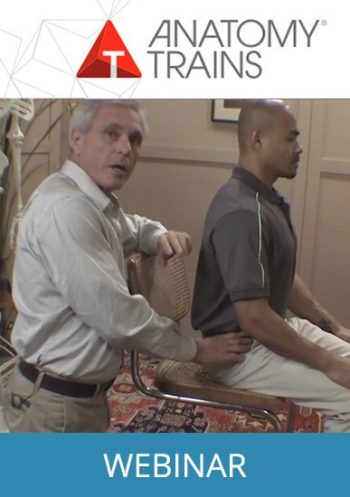
Sit up and listen!
‘Sitting is the new smoking’ – I don’t know who coined this great phrase, but let’s pay attention.
Sitting itself is a healthy activity that reaches back to prehistory – the hunter resting on a convenient boulder or fallen tree, the farmer resting on her haunches with friends to survey a day’s planting. Squatting or sitting at ground level were both presumably common from Lucy afarensis through the Neolithic Era. Such sitting persists up to the present for most nomads and many agriculturalists. These unaided forms of resting the spine, hips, or feet are only minimally detrimental to biomechanical health compared to what we’re doing to ourselves today.
This rise of this ‘sitting as a bad habit’ idea refers to chair sitting and the ubiquity of the chair as an essential feature of domestic and work life in the last two centuries and especially epidemic in the last two decades. At work, at school, in transit, at the computer – we are in the midst of an inactivity crisis. Let’s look at the situation as our clients find it before offering some body-saving homework for your client who is stuck in a chair for hours a day – an ever-increasing percentage of the population.
A chair first makes its appearance in recorded human history in the art of the Egyptians about 5000 BC. Thrones for kings date from such antiquity, chairs for the nobility, high prelates, and politicians follow gradually as the ‘vote’ spreads. The very word ‘bank’ come from the benches the money-lenders (bankers) sat upon before Jesus turned them over in one of His few demonstrations of anger (a habit we might consider reviving given our current bankers’ shenanigans).
For the common farm laborer or soldier, access to chairs is a much more recent development. With astonishing speed the amount of time we spend in chairs with planes trains, and automobiles, in front of entertainment, eating, waiting for doctors and children, and most of all working – meetings with people and computer screens. It is estimated that more than 30% of Americans and western Europeans have desk jobs.
To sit has a lot of metaphoric associations. ‘Sit’ has the longest list of definitions of any word in the Oxford English Dictionary. We tell dogs and children to ‘Sit!’ – stop making that fuss and pay attention. Lots of phrases refer to sitting – ‘sit tight’, ‘sitting in limbo’, ‘set a spell’, and words like sedentary, sedan, sediment, and set all take their base from ‘sit’.
The greatest of these – and one we will use in our exercises – is ‘settle’. Like settee and settlement, ‘settle’ arises from ‘sit’. It is amazing how many prepositions can be used to give ‘settle’ a different meaning: Settle in and let this situation settle out before you settle up. Then you can settle down without having to settle for less – see what I mean? Sitting is everywhere in our language – and now it is most ‘everywhere’ for our clients.
Recommended
Your Chair As a Movement Tool with Tom Myers
$19.95 for 60 daysToo many of us sit for too much of the day – whether at the office, in school, in transit, or, as I am now, at the computer. This webinar teaches a number of awareness and loosening exercises to lessen the negative effects of too much sitting. Learn the techniques yourself off this webinar and… Read more
Read moreSo, if you include all the time you sit during the day, how much is it? Most people are surprised by the time they have cataloged it, because we all feel ‘busy’ on the phone there is a sense of movement, but driving is done sitting, flying is sitting, so is most of public transportation, working is usually sitting, so is most of eating. For most of us, so is going to the bathroom, and much of our leisure time at home is spent sitting – in front of a screen of one sort or another, as I am now and probably you are too.
Given how many collective hours we devote to this form of ‘exercise’, how can we be more consciously healthy about it?
The Anatomy of Sitting
In chair sitting, the knee and hip joints flex to around 90 degrees, the ligaments of the knee, hip, and foot loosen, most of the muscles relax, and much of the weight of the body is transferred from the feet to the bottom of the pelvis. This eases the strain on the feet and legs. Less obviously, sitting can release stress in the hamstrings and on the front of the spine by releasing all the flexors of the hip. Bending these joints toward our embryological pattern (the fetal or floating position) relieves myofascial force transmission (read: stress) in what Myers has termed the Superficial Front Line, Deep Front Line, and Superficial Back Line.
There are certainly questions about what happens to the legs in some sitting positions like what happens to circulation when crossing one leg over the other. Our concern here is primarily in this is what happens from the tailbone up – the pelvic floor, the abdomen and organs, respiration, shoulder position (since the arms are often active when sitting), and of course the neck and ‘perceiver’ at the other end of the spine.
There are three ways to help the over-sitter move away from this bad ‘habit. Change the environment, change the habit, or give them new tools to fight the bad effects. Obviously one way to diminish the negative effects of sitting is to not do it so much.
Solution #1: Change the working surface
Raising your work station up so you stand to work. There are commercial products that easily allow you to change the level of your work, so you can vary your position as often as your body demands. Some of my friends and some famous people have built desks at which they stand. This is great if it works for you, but not many people can stand in one place all day with any comfort.
The ability to change from one position to another – from standing to chair to sitting on the floor to upside down on the couch like a teenager – is very helpful to all the problems ‘chair stasis’ can bring. Not every situation allows that, of course, so the second alternative is to change the tool itself, the chair
Solution #2: Change the chair
New ‘ergonomic’ chairs appear regularly, including brave attempts to include inflated balls, various forms of lumbar support, one where you rest forward onto your shins, expensive ones with adjustable everything – all great ideas, and all of these work for some people, but none of them works forever for everybody
Strap system to pull the shoulder shoulder back or straighten the spine can likewise be helpful, but likewise do no solve the problem for many or for very long.
Many of our working clients, however, do not have the option of altering either their desk or their chair, so let’s offer some changes that are easier for them to put into effect.
Solution #3: Change the social habit
Getting up for 5 minutes out of every hour, even just to walk around or do a bit of light stretching or exercise, is said by the National Fitness Council to reverse many of the negative effects of prolonged sitting. Interestingly, 5 min performed each hour hour has a better effect than 30 min of exercise at the end of the day – the damage is already done. Even a sustained period of intensive exercise doesn’t make up for hours of uninterrupted sitting
This is the first place I try to intervene with my clients and with my own self, since as a writer and frequent flyer, I am as sedentary as the next 21st century person. In airports, I am the one doing Tai Chi in a corner as I wait for them to untangle a delay. Most people around me are sitting and relieving the boredom with food or Wolf Blitzer. Get up out of the chair – Occupy the airport! with movement.
On the long-haul flight, I annoy fellow passengers by getting up often, and often find an out-of-the-way spot to bounce on the balls of my feet to get the juices moving back toward the heart. More folks should be doing this for their health (and to keep their feet from swelling), but I am often the only one.
Solution #4: Add new homework tools
We are headed for the teachable homework tools we promised, but the simplest comes first:
• Set a timer
When I am sitting writing – which is a fun exercise in total concentration for me so I can do it for hours – I set a timer to make sure I get out of the chair for at least a few minutes every hour. Most folks with a smart phone can easily do this – set their clocks to chime every hour, and use that alarm as a signal to get up for a few minutes and stretch, walk outside, bounce a little, or just ‘pandiculate’ – that wonderful scientific word for the kind of yawning and stretching a cat or a baby does when it wakes up – best thing you can do to restore neural alertness, circulatory distribution, and break up nascent fascial adhesions.
The strength of this cheap and easy ‘change of habit tool’ cannot be overestimated, but as with all these homework tools, it depends on the person actually doing it. If I am totally absorbed in what I am doing, I tend to ignore the iPhone alarm and keep writing, so that by the time it rings again I am stiff and turgid, and probably not focusing as well. ‘Mens sana in corpore sano’ said Juvenal – a healthy mind in a healthy body – and we have to keep our bodies moving if the part above the neck is to keep functioning at optimal levels.
• The rest of the exercises are in this webinar: (Link w/product picture)
Pelvic neutral
Spinal neutral
Support for the breath
Pelvic clock
Arcing the spine
Flexion-extension with the chair
Side-bending and twists with the chair






